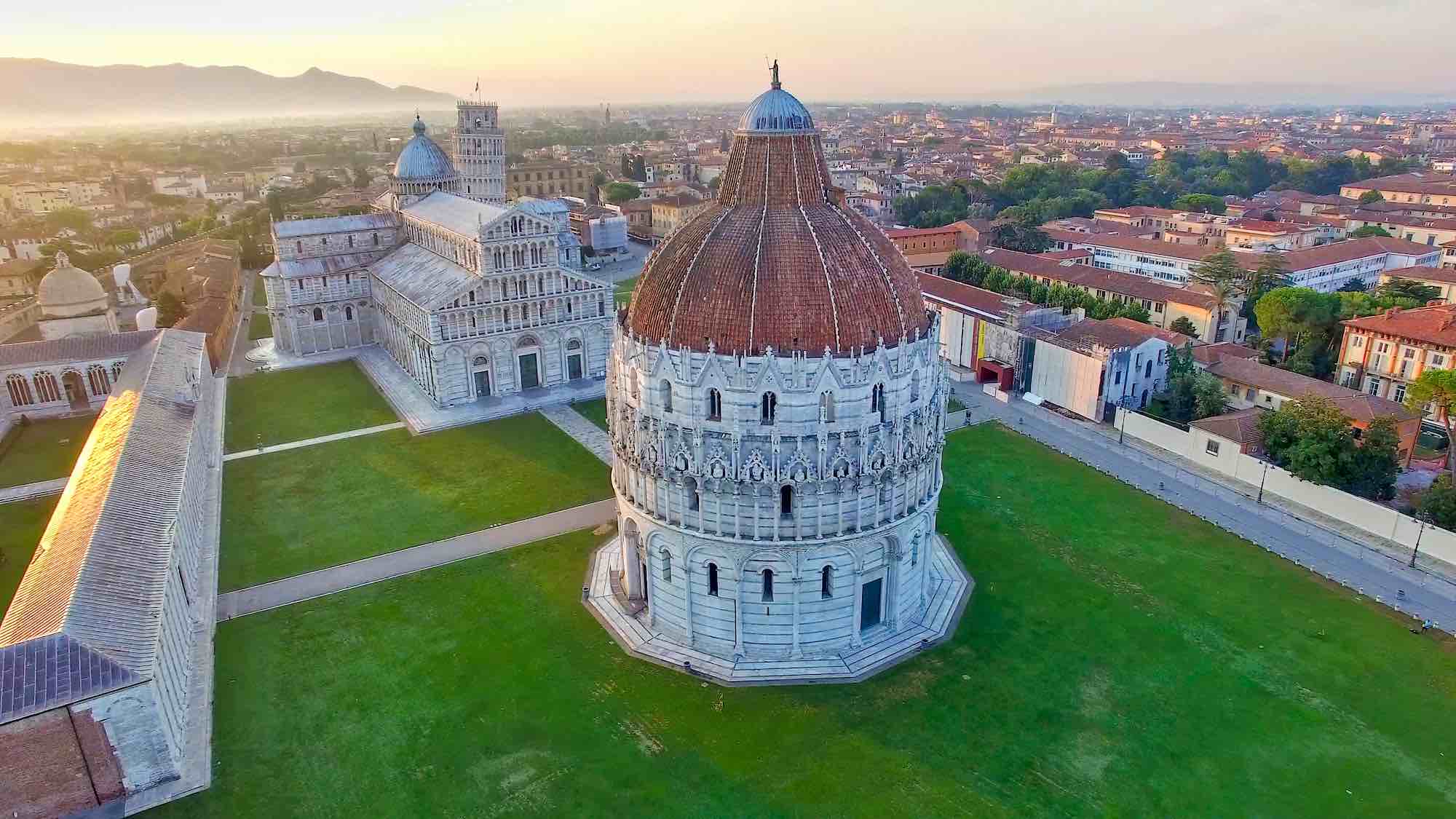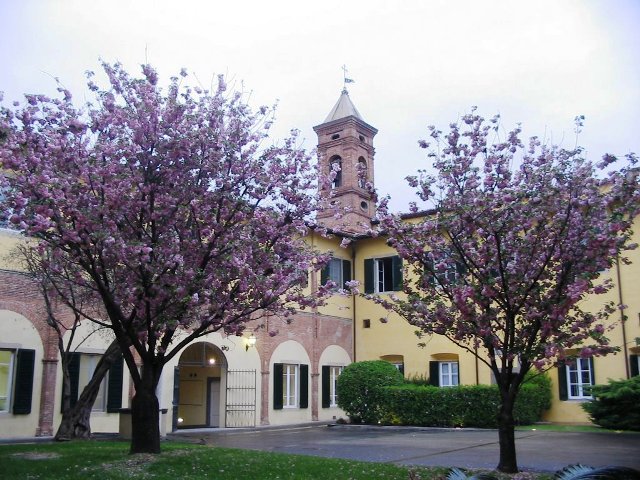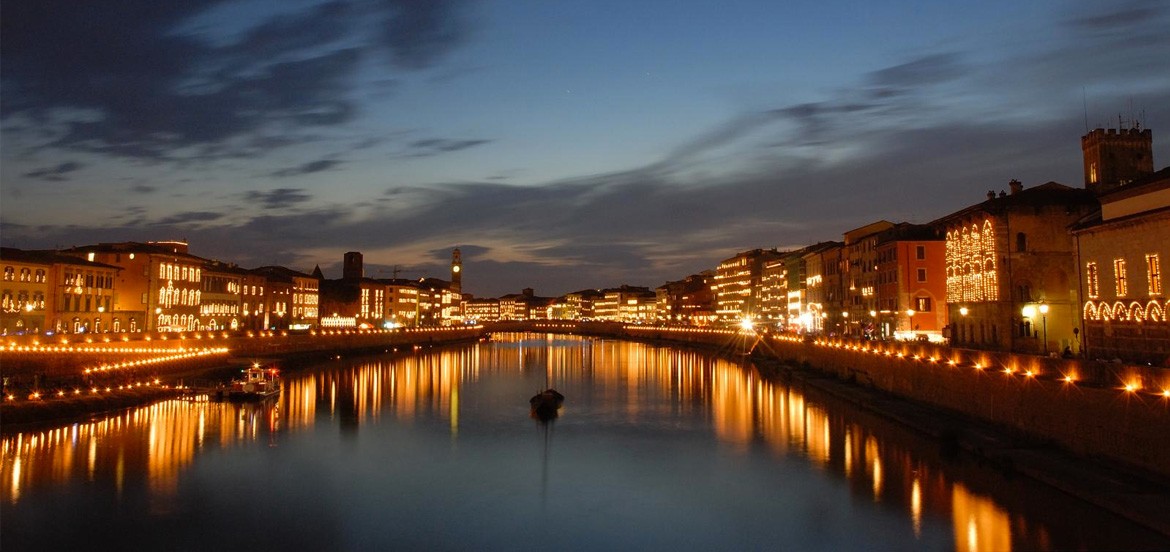Pisa
Pisa is an open-air museum.
Pisa, whose name seems to derive from the Etruscan word 'estuary', 'mouth', boasts a millennia-long history on the traces of which visitors can walk as they lose themselves within the fabric of the city, characterized by majestic squares rich in history, astonishing monuments, and palaces of diverse styles.
The city, on whose Lungarni are precious palaces in the Gothic and Renaissance styles, whose alleys are manned by medieval 'tower houses,' and in which chapels with hidden gardens and majestic facades of Romanesque and Gothic churches spring up, and in whose squares unique monuments glow with beauty and magnetism, offers an exciting experience.
 The ivory splendor of Piazza del Duomo (or Piazza dei Miracoli), symbol of the wealth and splendor of the Maritime Republic of Pisa, with the city's four most striking monuments; the Baptistery (with unique acoustics), the Camposanto Monumentale, embellished with extraordinary frescoes, the Cathedral of Santa Maria Assunta, an absolute masterpiece of Romanesque-Pisan architecture, and the famous Campanile, or Tower of Pisa, known throughout the world for its peculiar slope that can be enough to amaze the visitor, who, however, by climbing the medieval walkway, which runs along the square, has the additional opportunity to observe the entire city from a previously unseen perspective.
The ivory splendor of Piazza del Duomo (or Piazza dei Miracoli), symbol of the wealth and splendor of the Maritime Republic of Pisa, with the city's four most striking monuments; the Baptistery (with unique acoustics), the Camposanto Monumentale, embellished with extraordinary frescoes, the Cathedral of Santa Maria Assunta, an absolute masterpiece of Romanesque-Pisan architecture, and the famous Campanile, or Tower of Pisa, known throughout the world for its peculiar slope that can be enough to amaze the visitor, who, however, by climbing the medieval walkway, which runs along the square, has the additional opportunity to observe the entire city from a previously unseen perspective.
 The city, which is also famous for the university institutions that have helped enrich it and that have their roots in distant eras, offers visitors a stimulating cultural life full of events and happenings that take place within the university campus and its many museums and theaters. In addition, during the so-called "June in Pisa," the entire center comes alive with contests, parades and medieval games, becoming the scene of colorful historical reenactments.
The city, which is also famous for the university institutions that have helped enrich it and that have their roots in distant eras, offers visitors a stimulating cultural life full of events and happenings that take place within the university campus and its many museums and theaters. In addition, during the so-called "June in Pisa," the entire center comes alive with contests, parades and medieval games, becoming the scene of colorful historical reenactments.
On the night of June 16, in honor of San Ranieri, the Patron Saint of Pisa, the Lungarni and the Leaning Tower of Pisa are embellished with twinkling lights and candles: the illuminated outlines of the doors and windows facing the lungarni are reflected in the leaden flow of the river as the city slips into a timeless dream.